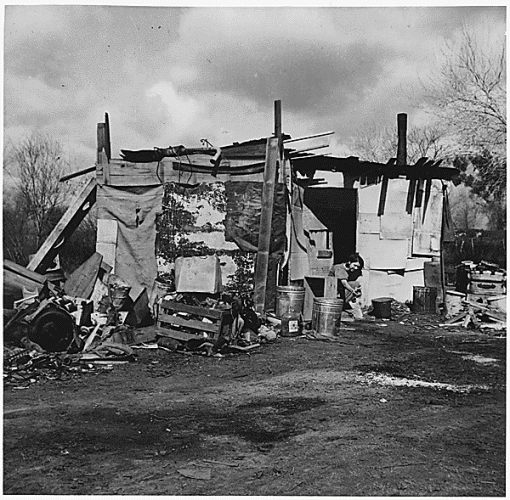The photograph became an icon of the Great Depression: a migrant mother with her children burying their faces in her shoulder. Katherine McIntosh was 4 years old when the photo was snapped. She said it brought shame -- and determination -- to her family.
"I wanted to make sure I never lived like that again," says McIntosh, who turns 77 on Saturday. "We all worked hard and we all had good jobs and we all stayed with it. When we got a home, we stayed with it."
McIntosh is the girl to the left of her mother when you look at the photograph. The picture is best known as "Migrant Mother," a black-and-white photo taken in February or March 1936 by Dorothea Lange of Florence Owens Thompson, then 32, and her children.
Out-of-work people frequently traveled West, during the Great Depression, seeking a better life in places like California. This woman (from Arkansas) had been living in this shack (near Bakersfield, California) for three years at the time Dorothea Lange took this photo, circa 1935.
Below is a picture of a bread line. Breadlines were long line of people waiting to be fed; in the absence of substantial government relief programs during 1932, free food was distributed with private funds in some urban centers to large numbers of the unemployed.


